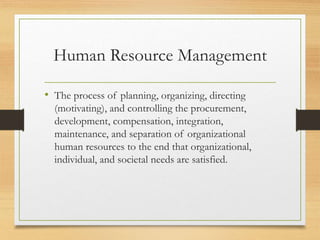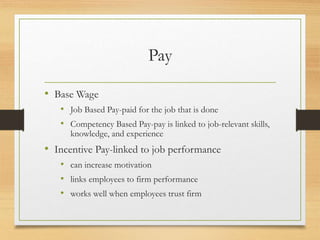Human resource management involves planning, organizing, directing, and controlling activities related to attracting, developing, compensating, and retaining employees to satisfy organizational goals. Key HRM activities include recruitment and selection, training and development, performance appraisal, compensation and benefits, and labor relations. Effective HRM requires forecasting future workforce needs through human resource planning, developing consistent HRM components, and ensuring legal compliance with labor legislation.

































